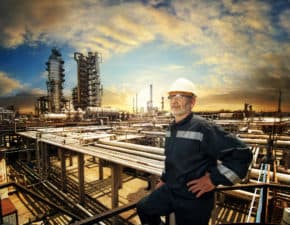Retirement income investing strategies usually become more interesting when interest rates start falling. Canadian investors entering retirement this year, or those close to embracing the golden years, may make tactical allocations that enhance portfolio values and lock in higher earnings yields for longer as the Bank of Canada (BOC) reverses course in 2024 and beyond.
For someone who has been diligently saving for some time, making $1,000 a month (or $12,000 a year) in passive income during retirement could be easy, without gambling on high-risk, non-investment-grade assets – a practice financial advisors strongly discourage as one’s retirement date draws nearer.
How to invest for high-yield retirement passive income
Investors can lock in high bond coupon rates on long-term, high-quality bonds before the BOC lowers rates much further. This strategy allows them to continue earning higher coupon amounts on generous fixed-income assets, which will maintain high contractual coupon rates for longer while yields fall.
Long-term GICs still look fine with yields above 4.6% on five-year contracts, and issuers like the Bank of Nova Scotia can offer monthly-pay five-year GICs with 3.85% coupon rates, a better yield compared to the Canadian 5-year bond yield of 3.33% right now.
However, take note that, by nature, bond ETFs are usually actively managed, and most will charge significantly higher annual management fees. Further, GICs may require you to manage maturities and reinvestments actively.
Beyond long-dated fixed-income investments, some bit of wealth growth is still necessary to protect the purchasing power of your retirement fund. Equity investments have historically been a good source of capital appreciation for decades.
Interestingly, stocks usually perform well during the first two to three years following an initial interest rate cut (and no recession). Canadian dividend stocks could increase in value and raise their regular payouts as earnings and cash flow grow with expanding economic activity.
Do you still need some equity exposure in retirement? The iShares S&P/TSX Composite High Dividend Index ETF (TSX:XEI) could satisfy your high-yield dividend income cravings every month during retirement to augment income from the Canada Pension Plan (CPP) and other retirement income sources.
Buy the iShares S&P/TSX Composite High Dividend Index ETF for monthly dividends
The iShares S&P/TSX Composite High-Dividend Index ETF is a low-cost, moderate-risk option. This index ETF pays attractive monthly dividend streams. BlackRock, the largest ETF fund manager globally, designed the fund’s portfolio to be a long-term foundational holding for investors looking to make regular streams of monthly passive income, even in retirement.
The ETF seeks long-term capital growth by investing its $1.5 billion net assets in mostly large-cap Canadian dividend stocks with high dividend yields, some of which raise dividends annually.
But why should you buy the high-yield dividend ETF for monthly income right now? The fund pays juicy monthly dividends that currently yield 5.4% annually. Since 2011, the ETF has converted several quarterly dividend streams from its 75 holdings into smoothened monthly cash flows from a single source, removing the need for investors to individually manage multiple dividend paycheques.
What’s more, the moderate risk-rated fund averaged a respectable 6.1% total annual return over the past decade, and offers wide diversification across Canadian economic sectors and individual dividend stocks all in a single investment.
Top holdings include tried, tested, and proven TSX dividend powerhouses Suncor Energy, the Royal Bank of Canada, Enbridge, and one of my personal favourites, Canadian Natural Resources stock. Energy sector stocks command a 31.2% weighting ahead of financials, which comprise 29.5% of the ETF’s portfolio. Utilities (14.7%) and Communication stocks (10.2%) are well represented while other sectors contribute single-digit weights to the portfolio to complete the high-dividend yielding power pool.
How much will you pay in fees? The XEI ETF’s management expense ratio (MER) is a low 0.22% annually. This translates to just $2.20 in fees for every $1,000 invested.
How to make $1,000 per month in passive income
To make $1,000 each month in passive income, you may invest $217,808.76 in the iShares S&P/TSX Composite Dividend Index ETF as shown in the table below:
| Investment Asset | Recent Price | Investment Amount | Number of Shares | Dividend Rate | Total Payout | Frequency | Total Annual Dividend |
| iShares S&P/TSX Composite High Dividend Index ETF (TSX:XEI) | $24.83 | $217,808.76 | 8,772 | $0.114 | $1,000.00 | Monthly | $12,000 |
The ETF is eligible for inclusion in registered investment plans and may offer a dividend reinvestment plan (DRIP). DRIPs help investors passively reinvest dividends into more shares when there are no immediate cash flow needs.
 Spring Sale
Spring Sale








